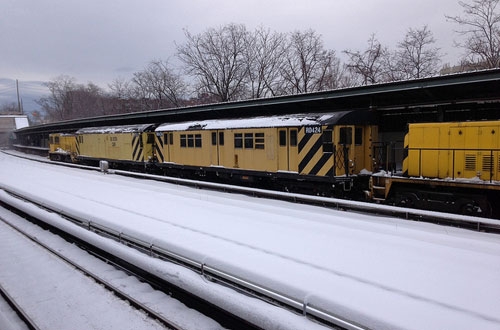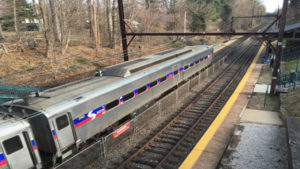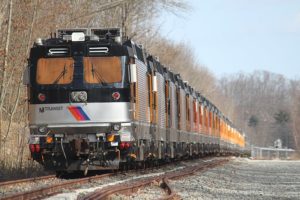MTA preps network for winter wallop
Written by Jenifer Nunez, assistant editor
As the season for cold and snowy weather approaches, Metropolitan Transportation Authority (MTA) New York City Transit (NYCT) is ready for winter operations. NYCT said it is leaning on lessons from the 2013-2014 winter that brought 14 significant storms and more than 50 inches of snow.
This year’s weather plan has been updated to include new, improved cold-weather and communications equipment; increased planning and collaboration with the Department of Sanitation and more alerts and checks on service for quicker and more proactive operations planning.
NYCT President Carmen Bianco said, “We never know what each winter will bring, so New York City Transit has to be prepared for anything.”
Snow and ice-busting equipment is ready to keep hundreds of miles of outdoor subway track and third rail clear of snow and ice.
Winter preparation for NYCT subways has been influenced in the aftermath of a Christmas 2010 blizzard, which stranded trains on outdoor trains. It prompted the agency to rethink its approach to operating service during crippling storms and resulted in a shift away from the philosophy that NYCT would deliver service until it is no longer possible.
NYCT has nearly 220 miles of outdoor track that are vulnerable to snowy and icy conditions, such as snow drifts that can cause stalling when they reach certain heights. Routes at ground level and in open cuts are particularly vulnerable to heavy drifting snow and freezing wet weather that can leave a coating of ice on the third rail.
“There is a point beyond which it is no longer prudent to send trains onto the outdoor sections of the lines,” explained Joe Leader, senior vice president, Department of Subways. “During a storm of rapid snow and ice accumulations, we cannot ensure that we can clear the right-of-way quickly enough to prevent stalled trains and trapped customers. But by modifying our operations, we can clear the roadbed effectively, allowing us to restore service much more quickly.”
In addition to deploying thousands of workers across the system when a major storm is forecast, the Department of Subways uses specialized equipment to move snowfall – some of it developed in-house – and technology such as snowplows, jet-powered snow blowers to clear the yards, snow throwers on mainline tracks and modified deicers, which are retired subway cars that spray de-icing fluid on the third rail.
Forecasts of accumulating snow or sub-freezing temperatures require NYCT to store subway trains indoors. Idle trains that are stored in yards or along unused outdoor tracks are instead stored along underground express tracks. Use of these tracks for storage purposes requires early suspension of express service in some locations.
“New York’s mass transit system is vital to keeping the city going and we’re doing everything necessary to make sure that the system runs as smoothly as possible through the cold winter months,” New York Gov. Andrew Cuomo said. “By activating this winter operation plan, the MTA is doubling down on its preparations for inclement weather and taking important steps to help buses and trains avoid delays and keep commuters safe.”





